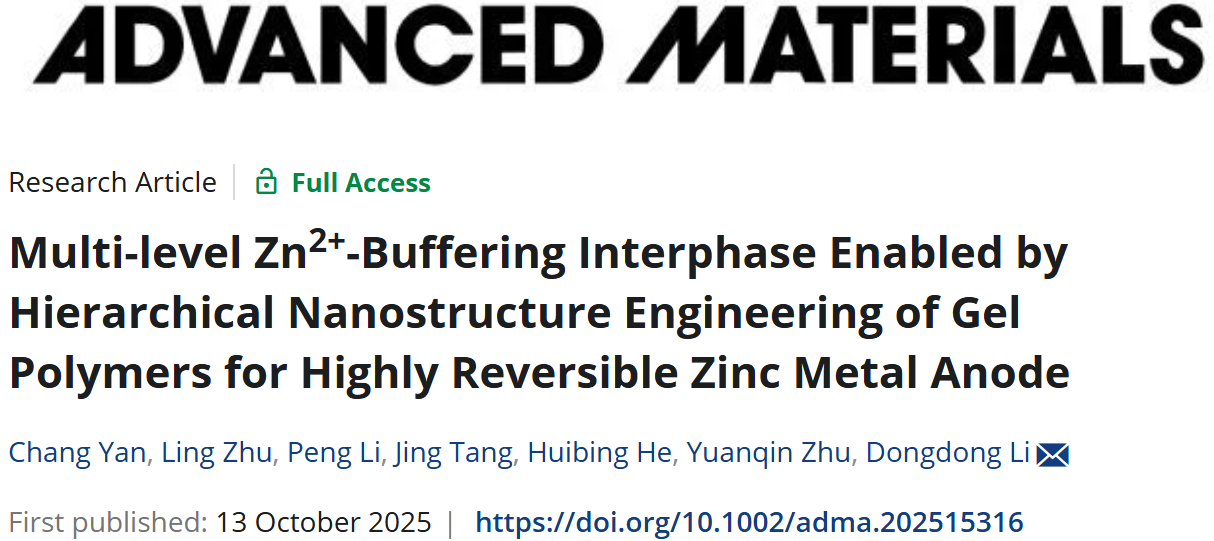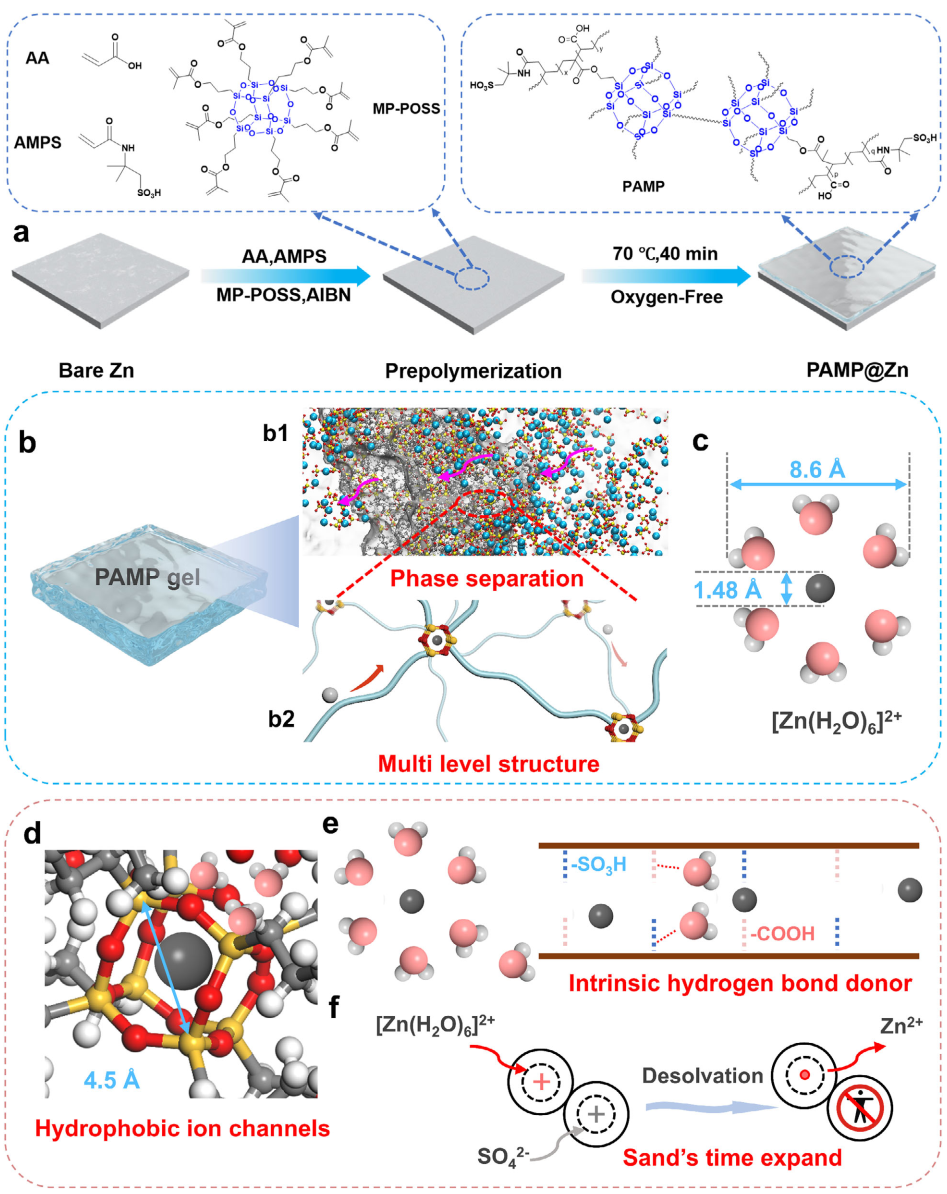Recently, the research team led by Professor Zhu Yuanqin and Assistant Professor Li Dongdong from the School of Chemistry and Chemical Engineering at GXU has made new progress in the field of applied basic research on high-performance aqueous zinc-ion batteries. The research results were published in the international academic journal Advanced Materials under the title “Multi-level Zn2+-Buffering Interphase Enabled by Hierarchical Nanostructure Engineering of Gel Polymers for Highly Reversible Zinc Metal Anode”. Yan Chang, a Class of 2022 master’s degree student from the School of Chemistry and Chemical Engineering, is the first author, and Li Dongdong is the corresponding author. Guangxi University is the sole corresponding institution.

Aqueous zinc-ion batteries have broad application prospects in the field of large-scale energy storage due to their high safety, abundant resources, and low cost. However, zinc metal anodes face issues such as dendrite growth, hydrogen evolution, and corrosion-passivation, limiting their practical use. Although traditional artificial interphase layers can improve zinc deposition behavior, how to precisely regulate zinc ion migration, guide uniform zinc deposition, and simultaneously suppress side reactions remains a key challenge.
To address the above issues, the team has, for the first time, successfully developed a hydrogel interphase layer with a hierarchical nanostructure via a simple and controllable copolymerization-induced microphase separation strategy. This layer enables multi-level Zn²⁺-buffering functionality, thereby significantly enhancing the stability of the zinc anode. The study found that methacryloxypropyl polyhedral oligomeric silsesquioxane (POSS), as the primary buffering unit, possesses a unique nano-confinement effect and hydrophobicity. It can promote the desolvation of [Zn(H₂O)₆]²⁺ and block the penetration of water and SO₄²⁻, thereby achieving an optimal balance between enhancing Zn²⁺ transport and minimizing side reactions. Meanwhile, copolymerization-induced microphase separation can self-assemble to form molecular cluster-based secondary buffering units within the hydrogel. This structure can homogenize Zn²⁺ flux and extend Zn²⁺ migration pathways, thereby achieving dendrite-free zinc deposition. This study reveals a novel multi-level Zn²⁺-buffering mechanism based on the hierarchical nanostructure of gel polymers, which significantly enhances the cycle life and Coulombic efficiency of batteries, thereby providing innovative insights for the development of high-performance aqueous zinc-ion batteries.

It is reported that the research was supported by the National Natural Science Foundation of China (NSFC), the Guangxi University Assistant Professor Recruitment Program, and the Guangxi Postgraduate Education Innovation Program. The team is committed to the applied basic research on the application of polymer materials in novel aqueous batteries. This publication is their second related research paper published within the same year, following their results published in Advanced Functional Materials in 2025.